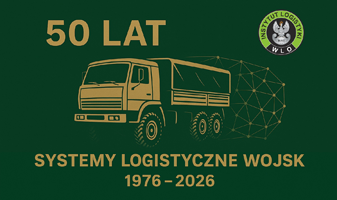ORIGINAL PAPER
Adaptation of selected digital solutions in the field of military logistics
1
Slovak University of Technology in Bratislva, Institute of Management of the Slovak University of Technology, Slovakia
2
Headquarters of the Border Guard, Poland
3
Military University of Technology, Faculty of Security, Logistics and Management, Poland
A - Research concept and design; B - Collection and/or assembly of data; C - Data analysis and interpretation; D - Writing the article; E - Critical revision of the article; F - Final approval of article
Submission date: 2022-03-28
Final revision date: 2022-08-11
Acceptance date: 2022-09-30
Publication date: 2022-09-30
Corresponding author
Anna Borucka
Wydział Bezpieczeństwa, Logistyki i Zarządzania, Wojskowa Akademia Techniczna, Kaliskiego 2, 01-479, Warszawa, Polska
Wydział Bezpieczeństwa, Logistyki i Zarządzania, Wojskowa Akademia Techniczna, Kaliskiego 2, 01-479, Warszawa, Polska
SLW 2022;56(1):17-34
KEYWORDS
TOPICS
ABSTRACT
The fourth industrial revolution is especially present in manufacturing processes. However, many technological solutions used in this area can also be successfully used on other levels. One of them is the armed forces. In the article, the authors analysed a process of the soldiers functioning in the course of the daily routine to indicate that it is possible to apply simple solutions in the field of electronic data collection and obtain measurable benefits. This is also how the main aim of the study was defined. The authors made a detailed analysis and evaluation of the selected process, pointing to its imperfections and proposing a solution that would optimize its most important parameters (time, reliability).
The proposed solution, involving the use of proximity recorders made it possible to solve the research problem, i.e. to answer the question: is it possible and justified to support selected processes of the functioning of soldiers in a sub-unit with the use of modern logistics 4.0 tools? This allowed to verify the research hypothesis that the use of simple tools using new technologies can significantly im-prove the functioning of the examined process. The following research methods, tools and techniques were used: literature analysis, synthesis, observational method, statistical analysis, comparison and inference. The article consists of an introduction and then a review of the literature. The main part is a statistical study. Based on this, a possible solution to the identified shortcomings was proposed. The article ends with a summary and final conclusions.
Share
RELATED ARTICLE
We process personal data collected when visiting the website. The function of obtaining information about users and their behavior is carried out by voluntarily entered information in forms and saving cookies in end devices. Data, including cookies, are used to provide services, improve the user experience and to analyze the traffic in accordance with the Privacy policy. Data are also collected and processed by Google Analytics tool (more).
You can change cookies settings in your browser. Restricted use of cookies in the browser configuration may affect some functionalities of the website.
You can change cookies settings in your browser. Restricted use of cookies in the browser configuration may affect some functionalities of the website.


